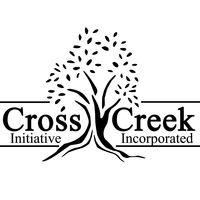For those that are interested, I believe that it would be worth viewing the Subcommittee on Investigations & Oversight Hearing-Green Building Rating Systems: http://science.house.gov/hearing/subcommittee-investigations-and-oversig...
Interesting to observe that the USGBC decision to postpone release of the next rating system follows shortly after this investigations and oversight hearing.
Blog Post
LEED 2012 Postponed to 2013, Renamed LEED v4
In response to growing concerns from the market, USGBC is postponing plans to ballot the next version of LEED until 2013.
In a surprise move, the U.S. Green Building Council (USGBC) announced today that it is postponing plans to ballot the next version of LEED until as late as June 2013. With this announcement, USGBC promises to keep LEED 2009 available for a full three years from now, although it intends to gradually ramp up incentives for teams to move to the new version of LEED during that time.
The move came in response to a growing outcry from architects and other building industry professionals—including many who have been core supporters of LEED since its inception—who had three related concerns:
- The proposed changes in the rating system were too much, too fast, especially in a weak real estate market.
- Some of the changes needed more refinement , especially in the Materials & Resources category, where whole new approaches to material selection had been introduced and had changed significantly with each public comment draft.
- Tools and resources needed to achieve the credits would not be widely available by the time the new system was slated to launch in November 2012.
Compounding these concerns were doubts about the ability of USGBC’s sister organization, the Green Building Certification Institute (GBCI) to develop an effective certification process in such a short timeframe—fears that linger after the release of LEED 2009, which was marked by an ill-fated attempt to outsource the certification process to third-party certification bodies and glitches that marred the usability of LEED Online.
LEED users conveyed their concerns directly to USGBC staff and board members, expressed them in formal comments on the various drafts, and debated them on the LEEDuser forums, where Robert Watson of EcoTech International, founding chair of the LEED Steering Committee, argued vehemently for a more measured approach to changes in LEED.
No longer tied to a particular year, USGBC is also reverting to a version naming system for the rating system, so the new version will be called “LEED v4” instead of “LEED 2012.”
SUPPORT INDEPENDENT SUSTAINABILITY REPORTING
BuildingGreen relies on our premium members, not on advertisers. Help make our work possible.
See membership options »Even as it frustrated the many volunteers on the LEED committees who have labored for years on many credits in the proposed draft and are anxious to see them introduced to the market, the new announcement was celebrated by many practitioners in the industry.
”It is gratifying to see that an organization that is nearly twenty years old with 15,000 member organizations still can as be nimble and responsive as the start-up we remember,” noted Russell Perry, FAIA, vice president and office director at SmithGroupJJR. “The Council heard many of its members when we said that we were going to need some time to test out the new ideas and make sure they worked in our markets.”
The committees have been anticipating these changes for a long time, after the decision with LEED 2009 to minimize technical changes and focus on the reorganization and weighting of the credit structure. As a result, the credit requirement changes in the proposed LEED v4 rating system are the most extensive in LEED’s twelve-year history.
The new announcement comes just a few weeks after USGBC had tried, with limited success, to allay these concerns by postponing the planned ballot from May 2012 to August and by promising to keep LEED 2009 available to project teams for at least six months after the introduction of LEED v4. At that time, USGBC had also announced plans for a “beta test” of the new rating system, but critics had questioned how such a test would be useful if the changes it purported to test were already locked in by member ballot.
The new plan gives time for that beta test to proceed while allowing for its results to inform a fifth public comment draft, which is scheduled to run from October 2 to December 10, 2012. That timeframe encompasses the annual Greenbuild Conference and Expo, allowing for in-person interaction among USGBC members and other stakeholders about the proposed changes.
USGBC asserts that language in LEED supporting the highest standards of forest certification and pushing for transparency and avoidance of chemicals of concern will not be watered down during this extended process, despite unprecedented attacks from the chemical industry, which recently joined the mainstream forest products industry in seeking to undermine LEED by pushing Congress to prohibit the federal government from using it.
Published June 4, 2012 Permalink Citation
Malin, N. (2012, June 4). LEED 2012 Postponed to 2013, Renamed LEED v4. Retrieved from https://www.buildinggreen.com/blog/leed-2012-postponed-2013-renamed-leed-v4
Comments
Subcommittee on Investigations & Oversight Hearing
John,Try reading this
John,
Try reading this http://chej.org/wp-content/uploads/Documents/PVC/bad_news_comes_in_three... and then think about the following brilliant comment/excerpt and come back to me.
The Honorable Paul Broun M.D. (R-GA), Chairman
"Recent proposed changes to LEED for 2012 also appear to penalize some common building materials with little to no basis in science such as PVC piping. I’m not sure why PVC piping in a warehouse is such a concern. Shouldn’t we instead be focusing on saving taxpayer dollars rather than social engineering?"
Is this a pause or rewrite?
Wow, Rob's still got influence. He even got them to change the name to v4.
v1.0; v2.0, v2.1, v2.2; v2009; v4.
It just seems like one of these is not like the others.
Code books are usually 98% the same from cycle to cycle, so having a new cycle every 3 years works. With LEED being about 20% the same from v2009 to v4 it doesn't seem like there was enough time for people to digest the impact it would have.
I wonder how many changes will be made before the next Public Comment in October. Are they starting over or still doing small tweaks based on comments from this last Public Comment that just ended? Is this just a 'pause' or a 'rewrite'?
Years ago I disagreed with
Years ago I disagreed with Rob Watson about the usability of LEED. The "It isn't LEED unless you prove it to us" mentality that has been the mantra of LEED reviews since the beginning.
Mr. Watson was not an actual user of LEED at the time. Now he is. Now he understands what I have known for more than 10 years.
What LEED needs is a total revamp of the review process. How about a process where review team actually help teams get a project certified rather than telling them they failed to read the latest new, and unpublished, review rule? Wishful thinking.
One would have hoped that
One would have hoped that USGBC learned a lesson when they rushed 2009 out the door, effectively releasing it as a public Beta program. Imagine the confusion in trying to keep current if the same types of frequent and inexcusable addenda are issued to a reference guide that could encompass 8 rating systems. I’m not as concerned with what is and is not included in each incremental or major release, as LEED will continue to develop at a steady pace. It’s far more important to me, as a LEED advocate (practitioner and educator), that it is as correct as possible out-of-the-gate. I agree with Michelle but would add that it wasn’t only clients who were throwing up their hands in disgust. Perhaps USGBC deserves an ID point by implementing an Integrated Project Team effort.
I agree with Peggy - reset on
I agree with Peggy - reset on the MR credits. I'd add that there needs to be a serious communications plan around that effort as well. Conversations with staff have convinced me that the intent of the current MR draft was never made sufficiently clear.
I encourage USGBC to thoroughly review the current draft
Nadav -
I encourage USGBC to spend some time reviewing the recent public drafts for errors and problems. I have a running list I will send to Chrissy Macken that I have gleaned while working on the Colorado Chapter’s Task Force for Regionalization that include wrong percentages, credits with incorrect or missing point allocations, typos, etc. Maybe the editor that they were planning to employ for the Reference Guide development could be put to work on the Rating Systems? We cannot have another version with a Reference Guide that contains 50 pages of addenda. I think the mistakes that are currently in the draft are indicative of USGBC moving too fast.
Also I would strongly encourage the TAGs to look at the GSA Green Building Rating System report and evaluate what could be done to address some of the concerns there - http://www.buildinggreen.com/auth/article.cfm/2012/5/9/Green-Globes-Tops....
As I followed the passionate discussion on LEEDuser about the 4th PC, I was relieved and surprised to learn of the turn by USGBC to slow down and get it right on the collateral materials and tools for LEED. I am so glad USGBC is listening to its members. The current process is flawed and clients are throwing up their hands in disgust. Right now, I think LEED credibility is at stake in the marketplace. While I understand the need to raise the bar, we can’t risk losing what we have gained. To me, that means a seat at the table that was not open to us in the 1990’s.
In the next version of LEED,
In the next version of LEED, besides updating reference standards, the MR credit category is the one that needs a revamp. It really hasn't changed since v1.
I can say from experience on more than 100 LEED projects, including reading specs from front-to-back to green them, that I rarely ask an A&E team to specify special LEED requirements for most of the products chosen as baseline for a design.
Contractors I work with are always surprised that I don't care if a steel product they buy has a specific recycled content, something other LEED consultants demand. I tell them buy your materials from whoever you like for the best price you can get.
Owners love my approach because it saves them the cost of greening projects. I always manage to get all of the MR points and often one or more exemplary performance points.
I have managed to drag Gold projects to Platinum and Silver to Gold using my approach. An approach built over the years.
I am someone who stands to lose a lot if the MR points are revamped. Yet, it is the credit group most in need of a revamp.
Nadav - I vote for a serious
Nadav - I vote for a serious Beta, but I also think the Reset button needs to be pushed for the MR Credits. A committee of fresh eyes, comprised of highly experienced real world practitioners (designers, specifiers, consultants) with some manufacturer representation tossed in the mix (but not dominating the conversation). Consensus development is so important to the success of LEED. Give this new committee the summer to pull it together, then have it reviewed by the MR TAG and the LEED Steering Committee, and perhaps have an early comment period from folks who want to have a say, with a goal of having it ready for the 5th round of comments with the full LEED package.
There are some GREAT ideas in the current MR Credits, but they need some thoughtful re-working to make them viable and acceptable
Incremental changes to LEED
Incremental change to LEED was proposed long ago and was violently shot down by USGBC management. They decided they needed to have a system to brand LEED and LEED vX was deemed the best branding option. Incremental change was deemed a loss of brand recognition.
Incremental change can be handled other than it is by LEED. I worked on the development of three LEED systems NC v2.1 & 2.2, CI v1), and reviewed several adaptations (Canada, India, CS). When a new rating system is worked on those working on the system claim an existing credit is broken and must be fixed. The trouble is that rather than limiting the changes and the number of broken credits that must be fixed, almost all of the credits are deemed broken with major surgery required.
Only a few credits should be changed at each revision; maybe 25%. New versions of standards can be applied at each update, but not wholesale changes.
Everyone wants to change what everyone else developed. There is always a better way. Sometimes this is true, sometimes not.
When I, as the vice-chair of the EQ TAG, decided LEED needed to split EQ Credit 6 into separate credits controllable by separate design team members, the response from the USGBC I got was amazing. They had to get approval from the developer of the requirements from LEED v1, a LEED Consultant, the original Reference Guide author, and, at the time, the sole-source certification reviewer: all were the same company.
You would have though that the Technical Advisory Group could simply discuss how to break the credit into two parts, present the change to the LEED Steering Committee, and that is it. Getting permission from a single outside entity, to change what that entity came up with and was deemed very difficult to work with, and entity that was not involved with the development of further LEED. But, that is not how the USGBC works.
Just know that LEED gets updated, membership votes okay, then someone else takes over and starts revamping what others tried to control. There is no membership and TAG control over the changes after a vote to update LEED.
LEED has now gotten completely out of hand. It no longer meets the objectives of the original developers and supporters: Bring green to the market, share information, and lift all boats.
LEED is now a code compliance system with the rules changing on a daily basis. Sharing of information does not occur. There is no code that works like LEED does. When you work with a code the rules are locked into place. You know what you have to do and design for. Not true with LEED.
I was awaiting LEED 2012
I was awaiting LEED 2012 quaking in my boots. As a LEED Consultant, my basic job is to educate my client so he/she can follow the sometimes byzantine twists of LEED 2009. I get a lot of pushback from owners and developers already - "I need to do WHAT?" and there usually comes a time in most of my projects where the owner is saying "Forget it, abandon LEED altogether!". I gently talk them into continuing, when I am successful. I wish the LEED process would take the approach that the building codes have taken - Incremental changes, not changing structure. The Energy codes have increased energy efficiency by 30% over two code cycles, that is really significant. LEED should take the same incremental approach. Modify a few things at a time, phase in changes, have an optional, radical approach for a while then make it mandatory.
As a developer of LEED v2 I
As a developer of LEED v2 I know that VOCs were put on the table from the beginning, LEED v1. When I was the vice-chair of the IEQ Technical Advisory Group (EQ TAG) we not only updated the requirements to the latest version of the standard, but we got rid of the VOC weighted average "work around" developed by the LEED reviewers. Projects would have to make a case for using a product that exceeded the VOC limits (Not exceeded by much, used in limited areas, etc.).
Unfortunately, to our horror, we found that the weighted average option was stuck back into the system by the Reference Guide authors, who were also LEED Consultants. The EQ TAG had absolutely no control over the adjustments to the requirements made by the Reference Guide authors. Just know that the consensus development of LEED was not followed with the Reference Guide development, and with the Certification Review process.
As big a jump as LEED 2012 appeared to be on the surface, it was expected to be even a bigger jump once the Reference Guides were written, and after the certified review rules written and "improved" as time went on.
In a perfect world the LEED development process should be:
1. LEED Credits and Requirements are developed using a consensus process.
2. Membership approves the latest LEED Credits and Requirements.
3. Reference Guides are written and ABSOLUTELY no additions or adjustments are allowed without going back to steps 1 and 2. The RG is a follower, not a leader, of LEED.
4. The Certification Rules are developed and ABSOLUTELY no variations or "improvements" are allowed to the requirements without going back to steps 1, 2 and 3.
Unfortunately, Step 4 takes precedence over Step 3. Step 3 precedence over Steps 1 and 2. The process works backwards for what it should.
Nick,Before people get too
Nick,
Before people get too excited about the LEED 2012 "pause" they should review the self-proclaimed "world's foremost environmental assessment method and rating system for buildings" history and see how long it took them to roll out new versions of their system or how long before they even had mandatory requirements!
History of BREEAM Rating Systems (Scheme)
1990 - version for offices
1991 - version for retail superstores/supermarkets
1993 - version for Industrial units
1993 - version for existing offices
1998 - BREEAM 98 major re-vamp of offices-Current layout, weightings etc
2002 - BREEAM Offices update (moved to annual update)
2003-2006 annual updates (new schemes introduced)
2008 - Major update to all schemes-Mandatory Post Construction Review-Minimum Standards-Innovation Credits
2008 - International versions
2009 — BREEAM In-Use
2011 - BREEAM 2011 is a new version for UK projects only
Peter, I agree with your
Peter, I agree with your comments but hope that the USGBC will produce a rating system that wouldn't have to be reorganized every few years but rather be robust enough that the metrics would be the only thing changing (i.e. slowly lowering the acceptable VOC levels). I can accept that LEED is still a relatively young system and doesn't have the maturity of the IBC or ASHRAE codes. However, the sooner we can get there the better.
I don’t know whether to cheer
I don’t know whether to cheer with those who are relieved that LEED v4 will provide more time for absorption or feel disappointed that there is not more support to take this next step as quickly as possible. Many will remember when LEED was first introduced, few manufacturers were reporting VOC data. This LEED requirement has transformed a significant aspect of all coatings, adhesives, sealants and other materials across a broad range of products and manufacturers. Perhaps we were naïve and unafraid but we knew VOCs mattered and we figured out how to get the information and report it. At the time, we scoffed at those who said the data couldn’t be captured or that it wasn’t important. Well, it turned out that this was important to a lot of people besides us. As a result, manufacturers responded.
Based upon my conversations with clients with whom I come in contact, they are interested in more energy and water efficient buildings. They are interested in knowing the chemical content of the materials with which they are living and having the opportunity to avoid them if they choose. Though they have little interest in the process or politics of LEED, the changes present in LEED v4 are changes that matter to them.
Market transformation is what USGBC and LEED has always done best. In my review of LEED v4, there is little in this new rating system that this community can’t do or figure out how to do. Yes, we might have to invent some new forms and become familiar with some new standards and organizations. But, we know how to do this and our confidence to do it will reassure our clients.
The changes proposed for the material credits, which is one of the major areas of concern, is likely to be the next area of significant market transformation. Is USGBC going to get it absolutely right and meet the needs of all members of this broad community? I doubt that that would happen even if USGBC took another ten years to vet the system.
The comment comparing the rate of change within building codes to LEED (2% change from version to version of a building code) causes me to ask whether we have forgotten the task before us. We will never accomplish what needs to be done at the rate of change of building codes. Codes are a minimum standard created to protect public safety. In this case, the “if it ain’t broke, don’t fix it” approach is appropriate. LEED, on the other hand, is an aspirational standard. In this case, continuing to maintain the motivational aspect of such a standard is paramount.
Beta testing is probably a good idea and the extra time USGBC has allotted may allow some testing to take place. But, most projects take much longer than a year. Whatever the vetting process will be, I hope our community will contribute solutions as well as criticism. I also hope that we will not let the perfect get in the way of the good. Let’s get to work. There is much to be done.
Given the extent of the
Given the extent of the proposed changes I wholeheartedly support the beta testing/pilot project model. In a sense, it is a whole new rating system, so let’s treat it that way.
I am ecstatic that the USGBC
I am ecstatic that the USGBC listened to the community as well as actual users of this Green Rating System and took action.
This is good for not only the professionals in industry, but also for those who have recently become or are studying to achieve their LEED GA/AP designation as they will be able to utilize their 'fresh' knowledge in the workplace on LEED2009 projects until 2015 and beyond.
Marcus and Scott summed up both sides of the argument very well in our previous discussion. While ~50% of buildings achieving certification are indeed achieving GOLD, the step from 2009-2012 seemed to be too great for the short 3 year life of LEED 2009.
This move will only serve to benefit the client, design + build side of this green building industry.
JMO
@ Nick: This is good news..
@ Nick: This is good news.. some of us are still working on V2.2 projects!
I find that the review comments between v2009 and v2.2 have merged. You need to anticipate meeting 2009 requirements for your v2.2 projects.
For example, EQp1, although approved for years and shown in the Reference Guide as system level compliance with cooling air supply, the new requirement is zone level analysis and heating air supply. This new review method essentially requires you to provide 10-15% more OA for a recently reviewed v2.2 project compared to previously certified v2.2 projects.
Bravo and kudos, to USGBC,
Bravo and kudos, to USGBC, for making this tough decision. I'm encouraged by the opportunity that we all now have to help USGBC get v4 off on the right foot. There have been some great improvements proposed, and some will need to be tested. And, it's likely that there will still be a lot of opposition to some of the complex ideas introduced in v4. It is where the market needs to go; we just need the right pace.
As a LEED AP currently
As a LEED AP currently finishing both V2009 and v2.2 LEED projects, my clients (all military) and I are very concerned about starting a new version so quickly. I like the idea of being able to run a beta test in the new version to show my customers how the new version will affect their projects. I'm however very concerned about the firms which review my LEED projects that they perform the evaluation of my projects consistently and fairly particularly concerning EAc1. I had two projects almost identical with PV Solar, same mechanical, almost exactly the same project and had very different results concerning the design review of the projects. As both projects were very close geographically and the both military organzations talked regularly, the different results on these projects has made my customer consider not applying for LEED at all. This is not what any of us want. So I'm all for waiting and getting the new version setup right the first time including setting up very strict guidelines for the firms that review the projects.
I also consider this
I also consider this welcoming news - even after working on LEED Administration full time for a few years, I am still learning the nitty-gritty details and situational tweaks that must be made to meet v2009 requirements. However, I understand the USGBC's desire to continue to move the goal line, so that LEED Certification remains an award for fully sustainable buildings. I assume the USGBC does not want to set the bar too low. In the interim, could v2009 be amended as simply as adjusting the point scale for EAc1? Or adjusting the goals required to meet other MR/EA credits? Many may cry wolf to this change, but it will effectively "move the goalposts" without introducing users, designers, and owners to an entirely new system.
I'm wondering if this move
I'm wondering if this move was influenced by the recent articles regarding the GSA studies into using Green Globes instead of LEED to rate sustainability efforts for federal projects.
This is good news.. some of
This is good news.. some of us are still working on V2.2 projects! I would avocate for a (5) year release schedule, especially if major changes are being implemented.
I was one of the "beta
I was one of the "beta tester" of LEED v3 at least that's how it felt like and remember well what effect that had on the clients. You hope you got it right, but you really couldn't be sure and even if you were right, the reviewer might not have had enough time to get familiar with the new version. That scared away many clients and I was very much afraid that will happen again with 2012 (v4).
To work on international projects add a whole other level to that. I have been supporting the USGBC in reviewing the next version of LEED in regards to what to do to make it do able for international projects and my impression is that everyone, USGBC, GBCI, Volunteers, Users are rushing through this, not enough time to really digest changes and new requirements. If more time will help to limit the glitches and smooths out the bumps, I 'm all for it. Non of us wants to stop moving forward but we need a reliable system to do so.
If I were the USGBC I would get with some of the project teams, which are just finished with their LEED certification and play through if this project would be able to meet LEED v4 or what it takes to get there. That will easily identify problems and make clear how much of a change this means to project teams.
I agree with all the above, it's hard enough to keep up with the still happening changes in LEED 2009 and now that we are just about comfortable with 2009 we start all over again.
I'm from Germany and we have mandatory energy efficiency standards for buildings. Those are publish in draft form about 3 years before they are getting in effect, giving professionals and the industry time to prepare for it and even make changes if something is not workable. This might be to lengthy for LEED but a time period to just get familiar with the final changes and time to read through would be very much appreciated.
Jean, Great comments! I agree
Jean,
Great comments! I agree with all of them.
My emotional feelings: I
My emotional feelings:
I breathed a sigh of relieve when I read this news. I found LEEDv3 was an improvement/refinement on LEEDv2 and that changes were mainly the clarification type. I was scared of v4...because the changes were, to be honest, of a different look and feel. This caused in me a reserved uncertainty. One invests so much time getting the nitty gritty out of one system, only to find that, just as you really get the bugs pollished out, the new system hits the floor running...and it's going to start all over again.
Being a mechanical engineer, I always try and compare the building industry to the mechanical machine industry. I always feel like the building industry is trailing 10-15 years behind in standard practice and application of existing technologies...so from that respect change can't come fast enough.
But that change needs to hit the areas that require the most change, in my opinion
1) Integrated Project Management
2) BIM
From an environmental point of view, the two biggest problems I still see in NC is
1) Energy inefficient building envelope design
2) Lack of daylighting controls for lighting
3) Lack of external shading devices
4) Lack of addressing the reduction of internal energy users (process loads)
5) Building orientation, i.e. site selection
LEEDv3 brought significant changes to the industry. It does a good job, so "don't fix what ain't broke". I hope that v4 can supply the needed pressure on the industry to force the industry to adapt where the changes are most needed without breaking a good existing tool.
I appologize if my comments are energy modelling biased.
Hurray - great news all
Hurray - great news all around but especially for the continued viability and legitimacy of LEED! As for your question, Nadiv:
1 - get the technology for LEED Online, and all the supporting functions working properly, reliably, and accessible to all users
2 - stop making any revisions to the forms and documentation requirements on LEED v3 immediately - let everyone learn how to use them without moving the goal line
3 - make sure the various new proposed reference sources and standards adequately cover the whole US - not just major market or regional areas and that their organizations are prepared to handle the volume of inquiry that will come before keeping them in the credit requirements
4 - pay for project teams to properly beta test projects along side LEED 2009 projects they may be starting - this is truly the only way to see the real impact of the proposed systems. Ridiculing customer beta testing for free is the basis for a huge cellular phone ad campaign right now - and for good reason - we cannot let that happen again.
Thanks for listening - glad I stayed up late enough to read all the good news!!!!!


















Add new comment
To post a comment, you need to register for a BuildingGreen Basic membership (free) or login to your existing profile.